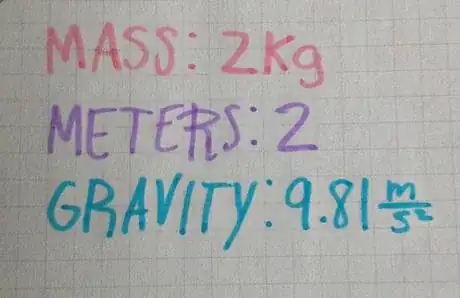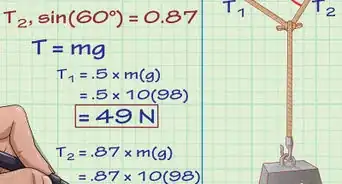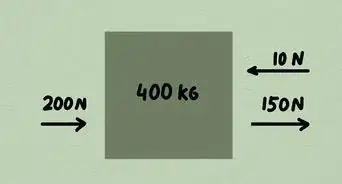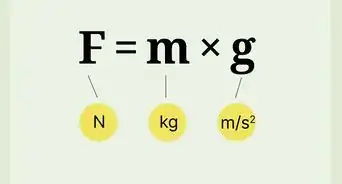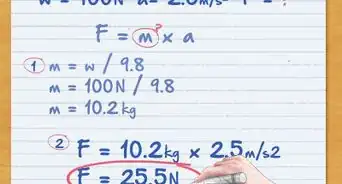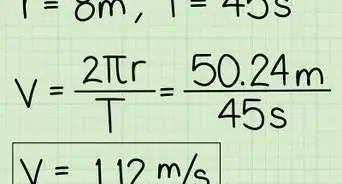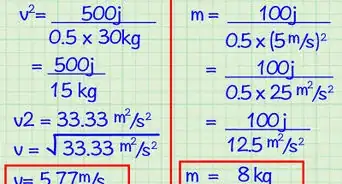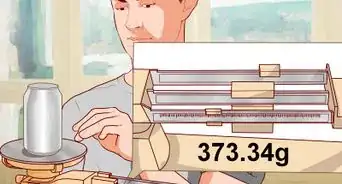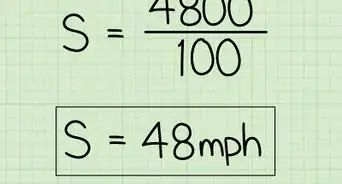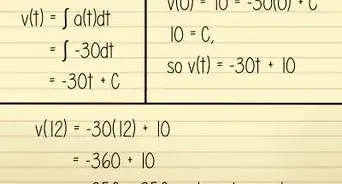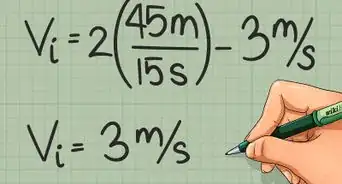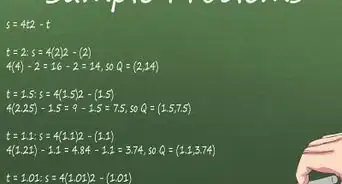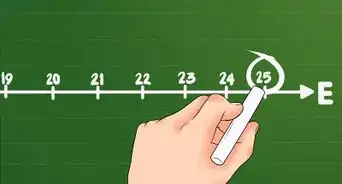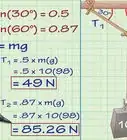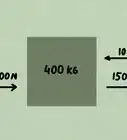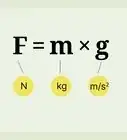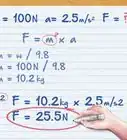X
wikiHow is a “wiki,” similar to Wikipedia, which means that many of our articles are co-written by multiple authors. To create this article, 9 people, some anonymous, worked to edit and improve it over time.
This article has been viewed 104,516 times.
Learn more...
Gravitational Potential Energy (GPE) is the energy of place or position. It depends on 3 things: the force of gravity (9.81), the mass of the object (in kilograms), and the height the object is off the ground (in meters).[1] GPE can be changed to Kinetic Energy. The unit for GPE is joules (j).
Steps
-
1Gather your data. First you need to get the data needed for this calculation. You should get the mass on kilograms (Kg), the height the object is off the floor in meters (m) and the gravity pull which is 9.81 (m/s2).[2]
- Example: A 2 Kg book being held 2 meters off the ground with a gravity pull of 9.81 m/s2.
-
2Write down the formula. So to get the GPE of an object you need a formula, the formula is MASS X GRAVITY X HEIGHT (M X G X H).[3]Advertisement
-
3Put the data in the formula. So next you need to replace the letters (M, G, and H) with your data.[4] So for the book example, it would be: 2 x 9.81 x 2.
-
4Solve the formula. The last step is to solve the formula and there you go, you have the GPE of your object.[5] The GPE of the book is 39.24 Joules.
Advertisement
Community Q&A
-
QuestionHow do I calculate the height using this formula?
 Community AnswerYou can multiply the mass by the gravity, all divided by the GPE. That will give you the height.
Community AnswerYou can multiply the mass by the gravity, all divided by the GPE. That will give you the height. -
QuestionI got 9.81. What was my mistake?
 Community AnswerIf you followed the instructions above and performed the same calculations only to get 9.81, then you simply entered a number into your calculator incorrectly, so some math went wrong along the way. The number 9.81 in this situation represents the average gravity of earth.
Community AnswerIf you followed the instructions above and performed the same calculations only to get 9.81, then you simply entered a number into your calculator incorrectly, so some math went wrong along the way. The number 9.81 in this situation represents the average gravity of earth. -
QuestionWhat is energy measured in?
 Community AnswerEnergy is measured in joules (J). If it reaches a thousand joules, you can convert it into kiloJoules (kJ).
Community AnswerEnergy is measured in joules (J). If it reaches a thousand joules, you can convert it into kiloJoules (kJ).
Advertisement
References
- ↑ http://hyperphysics.phy-astr.gsu.edu/hbase/gpot.html
- ↑ https://www.ducksters.com/science/physics/potential_energy.php
- ↑ https://intl.siyavula.com/read/science/grade-10/mechanical-energy/22-mechanical-energy-02
- ↑ https://intl.siyavula.com/read/science/grade-10/mechanical-energy/22-mechanical-energy-02
- ↑ https://sciencing.com/calculate-gravitational-potential-energy-4556463.html
About This Article
Advertisement
